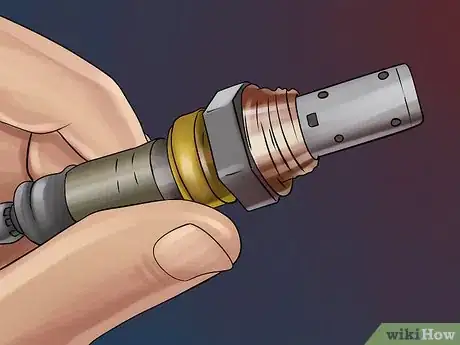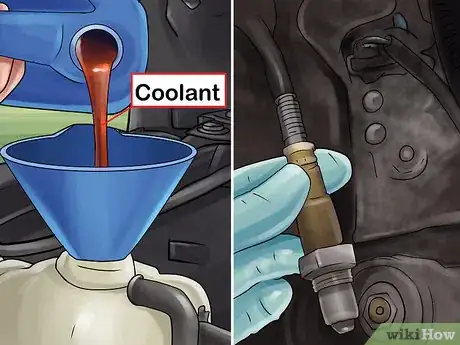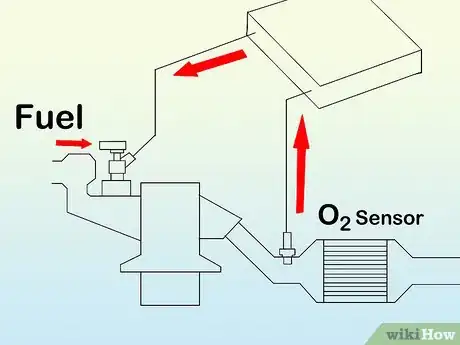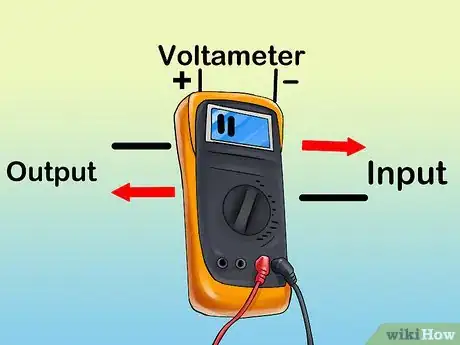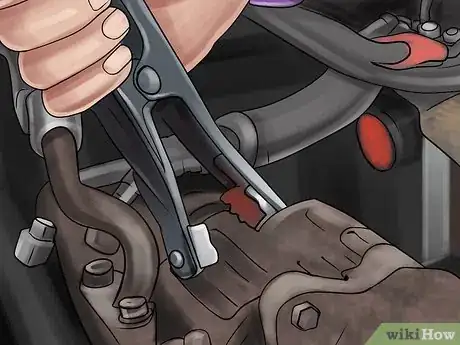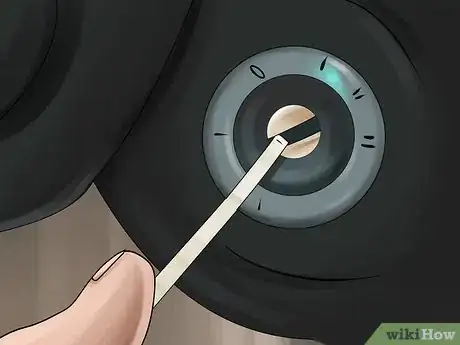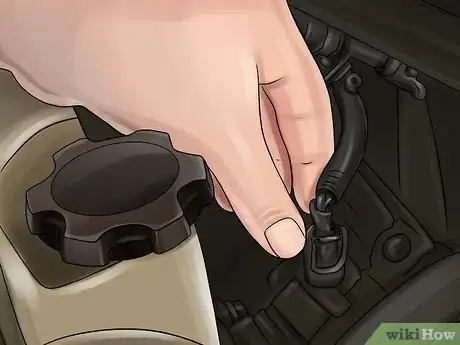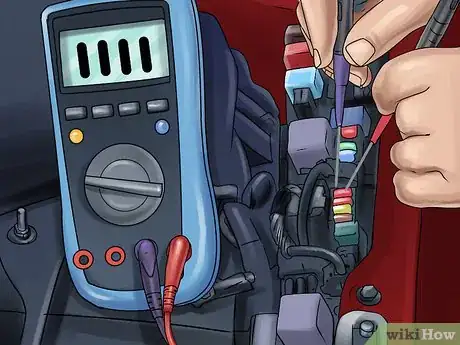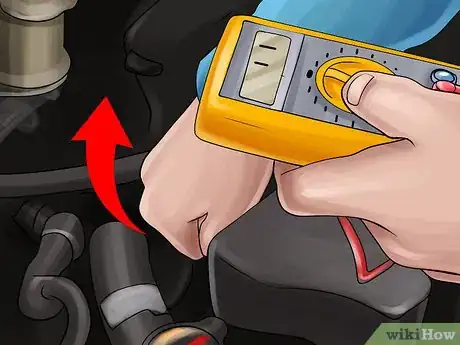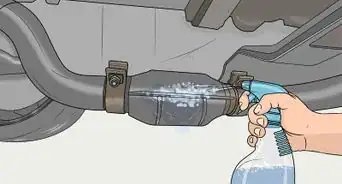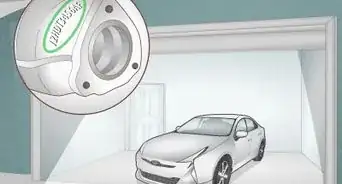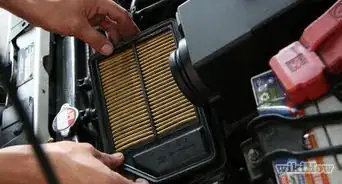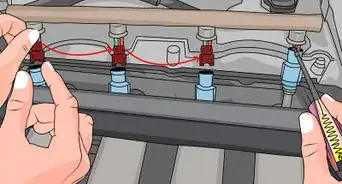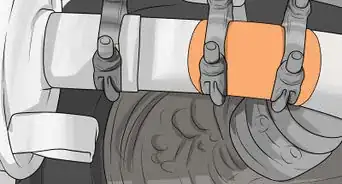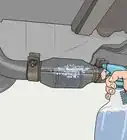X
wikiHow is a “wiki,” similar to Wikipedia, which means that many of our articles are co-written by multiple authors. To create this article, volunteer authors worked to edit and improve it over time.
There are 7 references cited in this article, which can be found at the bottom of the page.
This article has been viewed 81,025 times.
Learn more...
Air pollution problems have led to higher standards for cars to reduce emissions. Since the early 1980s, the Bosch oxygen sensor has been standard equipment on many vehicles, including Honda. Know how to check Honda oxygen sensors to keep your emissions down.
Steps
-
1Understand how Honda oxygen sensors work.[1]
- A rich fuel mixing with little oxygen in the exhaust leads to a typical voltage of 0.8 to 0.9 through the sensor's platinum electrodes.
- A lean fuel mixture with more oxygen in the exhausts causes the voltage to drop 0.1 to 0.3 volts.
- A balanced air and fuel mixture averages around 0.45 volts.[2]
-
2Check your oxygen sensors regularly.[3] Honda oxygen sensors usually last at least 50,000 miles (80,000 km), but older cars, or contaminated sensors, may affect their ability to reduce emissions. The sensors should be checked at these intervals:
- Unheated oxygen sensors (1976 to early 1990 models): Every 30,000 to 50,000 miles (48,000 to 80,000 km).
- The first generation of heated oxygen sensors (mid-1980s to mid-1990s): Every 60,000 miles (97,000 km).
- The second generation of heated oxygen sensors (since the mid-1990s): Every 100,000 miles (160,000 km).
Advertisement -
3Find out how many Honda oxygen sensors your vehicle has.
- Some vehicles introduced two Bosch oxygen sensors on V6 and V8 engines in the late 1980s.
- The number of Honda oxygen sensors doubled when Onboard Diagnostics II was developed in the mid-1990s.
- Check for extra oxygen sensors near the catalytic converter.
-
4Test your Bosch oxygen sensors if you've been using leaded gasoline, have a problem with coolant leaks or frequently add oil to your car.
- A Honda oxygen sensor may fail if it becomes contaminated by silicone (from gasket sealers), phosphorus or lead.
- Check oxygen sensors for other causes of failure, including mechanical stress or environmental factors such as road splash.
-
5Pay attention to any of the following signs of trouble coupled with a check engine light on the dashboard:
- Emissions test failure.
- Drivability issues, such as hesitation.
- Increased fuel consumption.
-
6Borrow or purchase a good quality digital voltmeter.
- Analog voltmeters don't work well enough to check oxygen sensors.
-
7Connect the positive lead of the voltmeter to the sensor output wire.
-
8Attach the negative lead to the accessory bracket or clean engine block.
-
9Turn the key without starting the engine.
- Check the connections and repeat the process if you don't see a change in the voltage.
-
10Start the car and run the engine at at least 2,000 RPM for a few minutes to warm up the sensor.
- You may need to rev the engine a few times.
- Look for several cross counts (passing the 0.45 volt mark) per second. This indicates closed looped operation and tells you the engine is warm enough.[4]
-
11Look for rapid voltage changes from 0.2 to at least 0.7. If this occurs, the Honda oxygen sensor is good.[5]
- If the voltage stays steady below 0.45, it is steady low.
- If the voltage stays steady above 0.45, it is steady high. Allow air to enter the PCV valve. If this moves the voltage to less than 0.3, the sensor is probably good.
-
12Unplug the voltmeter if you don't see the correct voltage changes.
- Reattach and repeat the steps.
- You have a bad oxygen sensor if there are still no rapid voltage changes.
Advertisement
Community Q&A
-
QuestionMy Honda Accord 2004 has a Maintenance Required light on the dashboard. I've had it serviced, but the lights is still on. What does it mean?
 Community AnswerMost auto parts stores will check diagnostic codes for free or small charge. You can also purchase a tool to read the codes yourself (I have an OBD II reader from Harbor Freight; it cost about $40 and works just fine). A quick check will tell you if there is a problem, and if you made the repair, you will usually have to clear the fault code for the dash light to go off.
Community AnswerMost auto parts stores will check diagnostic codes for free or small charge. You can also purchase a tool to read the codes yourself (I have an OBD II reader from Harbor Freight; it cost about $40 and works just fine). A quick check will tell you if there is a problem, and if you made the repair, you will usually have to clear the fault code for the dash light to go off. -
QuestionHow do I check the A/C in my Honda Odyssey?
 Community AnswerThere are several reasons for A/C to be inoperative. You'll need to determine if it's just low on Freon/R3, if it is a belt, if the compressor is seized, or if it's a fuse/relay inop. Some auto parts stores may be able to help you determine this, otherwise you can take it to a mechanic to diagnose the problem so you can decide how to proceed.
Community AnswerThere are several reasons for A/C to be inoperative. You'll need to determine if it's just low on Freon/R3, if it is a belt, if the compressor is seized, or if it's a fuse/relay inop. Some auto parts stores may be able to help you determine this, otherwise you can take it to a mechanic to diagnose the problem so you can decide how to proceed.
Advertisement
Warnings
- Beware of replacing Bosch oxygen sensors with 3- or 4-wire universal oxygen sensors. An incorrect installation can damage the oxygen sensor or the car's computer.⧼thumbs_response⧽
- Ignoring oxygen sensor failure can damage the catalytic converter and lead to stalling and poor performance.⧼thumbs_response⧽
Advertisement
Things You'll Need
- Digital voltmeter
References
- ↑ https://www.meineke.com/blog/oxygen-sensor/
- ↑ http://www.autotap.com/techlibrary/understanding_oxygen_sensors.asp
- ↑ https://www.youtube.com/watch?v=nLhqTG0iBVU
- ↑ https://www.youtube.com/watch?v=NKsS6AELPuM
- ↑ https://www.youtube.com/watch?v=DvKZ2GDYEz4
- http://www.autohausaz.com/honda-auto-parts/honda-emissions-oxygen-sensors.html
- http://www.popularmechanics.com/cars/how-to/maintenance/4219927
About This Article
Advertisement

